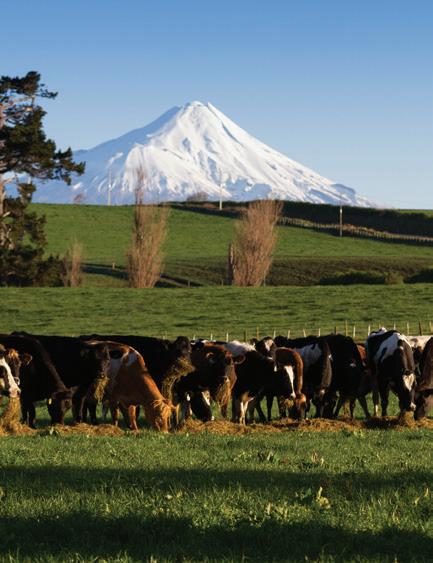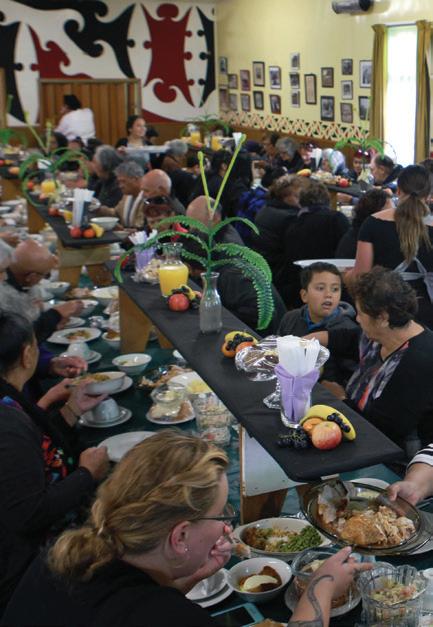
7 minute read
New metrics drive business evolution
A review of the Kaupapa Evaluation Tool (KET) will mean that investment and asset management decisions will be aligned more closely with the Parininihi ki Waitotara (PKW) core values while delivering long-term benefit to owners.
The tool has been in use for nearly five years as an assessment mechanism for investment opportunities to ensure any decisions take the organisation in the strategic direction laid down by the Board.
Made up of around 20 original metrics (a measure used in quantitative assessment), the original KET was developed with the assistance of Sacha McMeeking, Senior Lecturer at Canterbury University.
“The tool has served us well when assessing investments in the past, and we wanted to build on that foundation ensuring that future ventures would deliver further long-term outcomes we want to achieve right across the organisation,” says Joe Hanita, PKW General Manager Finance and Investments. “That means that investment and asset management decisions continue to move beyond rate of return or financial benefit. Our values are at the core of what we do, so it is important that they are the core of what we deliver too, so we have balance across our whole kaupapa.”
The revised version of KET now has 25 different metrics (see table) that assess investment opportunities and asset management across a wide range of criterion such as cost management, animal welfare, resource use and efficiency, cultural pride, the PKW narrative, employment provision for Taranaki Māori, and progressive procurement.
“These metrics have been informed by our core strategic intent along with operational frameworks such as, for example, the Kaitiakitanga and procurement strategies,” says Joe. “They bring to life our core values of Kaitiakitanga, Manaakitanga, Whakapono, Whanaungatanga and Kotahitanga, so measurable outcomes can be assessed and quantified.”
Each metric has a rating grade from one to 10. PKW has set the minimum standard for any metric at five, which means any investment or asset delivering at a lower level sets off a ‘red flag’.
“A red flag alerts us to the fact that something is underperforming which means we can make a decision of how to address it,” explains Joe. “Whatever approach we take will be a methodical and proactive one, not a reactive response. This is not a revolution, it’s an evolution to deliver results over the next five, 10, 25 and 50 years.”
Any new investment proposal is assessed using KET by management and then sent to the Board, along with evidence for the rating allocated. Board members review the proposal and decide to proceed or not with the opportunity.
An annual assessment of all significant PKW assets and investments will be carried out by both governance and management teams at PKW, with the possibility of independent review also being considered in the future.
“We talk a lot about alignment and balance, and these 25 metrics will enable us to take an objective view about where we actually sit as an organisation when it comes to following our aspirations,” says Joe. “KET will also mean we can lift our transparency as a business for our owners, with performance against each metric forming part of future annual reports and discussions at the annual general meeting.”
“In lots of ways, the tool will act as a map for our journey, providing signposts and directions to ensure that we keep to the path we have set ourselves.”
METRICS FOR THE KAUPAPA EVALUATION TOOL (KET)

MANAAKITANGA - Care for our present and future generations
Return on Assets: The rate of return on the asset / investment
Debt: The level of debt and debt maturity tied up in the investment
Dividends and distributions: The extent to which proposition will impact dividends/distribution to shareholders
Risk: The level of risks identified and associated with the investment and the maturity of its risk management practises
Cost management: The extent to which costs are well managed by the investment

KAITIAKITANGA - Commitment to leadership
Health & Safety: The extent to which the investment manages its health and safety risks and fosters a positive safety and wellbeing culture
Animal welfare: The extent to which the investment meets its requirement and obligations for animal welfare
Waterways protection: The extent to which operations meet the minimum requirements of the Kaitiakitanga Strategy for Water Monitoring and Protection of Waterways
Resource use and efficiency:
a. Nutrients: The extent to which the investment is efficiently using nutrients
b. Water: The extent to which the investment is efficiently using water
c. Energy: The extent to which the investment is efficiently using energy
Waste management: The extent to which waste is managed by the investment
Effluent management: The extent to which effluent is managed by the investment
Climate change risks: To be determined based on the PKW Climate Change Strategy
Biosecurity: The likely biological or biochemical impact of the investment or an event effecting the investment
Investments:
a. Environmental complianceAgri-investments: The investment’s ability to remain compliant to the applicable environmental legislation and other regulatory requirements
b. Asbestos - Commercial
- Investments: The investment’s ability to remain compliant to the applicable environmental legislation and other regulatory requirements, specifically under Health and Safety at Work (Asbestos) Regulations 2016.
c. Land contaminationCommercial - investments: The investment’s ability to remain compliant to the applicable environmental legislation and other regulatory requirements, specifically land contamination
d. Building Warrant of Fitness
- Commercial-investments: The investment’s ability to remain compliant to the applicable environmental legislation and other regulatory requirements, specifically Building Warrant of Fitness

WHAKAPONO: Adherence to our tikanga and belief in our future
Te Reo: use, understanding, relevance, proficiency: The extent to which the investment encourages wider use of Te Reo (visability and reach)
Cultural visibility & pride: The extent to which the investment will have a positive or negative effect on how shareholders and Taranaki Māori view themselves
PKW Narrative: The extent to which the investment is in line with PKW’s narrative
Access and connection to land: The extent to which uri and shareholders are likely to gain an increased sense of connectivity with land
Wāhi tapu: The extent to which the investment protects and highlights wāhi tapu

WHANAUNGATANGA / KOTAHITANGA: Belief in collective action with trusted relationships
Attraction and retention of key staff: The extent to which the investment is able to attract and retain key staff
Co-investment opportunities: Extent to which proposition has potential co-investment opportunity for other Taranaki Māori groups Working conditions: Extent to which the investment looks after its workers and has a good working culture
Employment opportunities for Taranaki Māori: Likely impact on job retention and creation
Capabilities development; internal, external: The extent to which the investment provides opportunities to develop both internal workers and other external stakeholders such as young Māori and whānau
Aligned partners; progressive procurement, supporting Māori business and value for money: Likelihood of new whānau, iwi and regional new businesses being created or existing SMEs growing as a result of proposition. Two metrics including spend with Māori businesses and value for money decisions
- - -
The Kaupapa Evaluation Tool (KET) is made up of 25 different metrics that assess and analyse investment opportunities and asset management across a wide range of criterion.
These metrics are aligned with the values of Manaakitanga, Katiakitanga, Whakapono, Whanaungatanga and Kotahitanga that stand at the core of Parininihi ki Waitotara (PKW) as a Māori incorporation.
KET enables business outcomes to be quantified to ensure any decisions keep the organisation on track to reach its strategic goals and aspirations.








